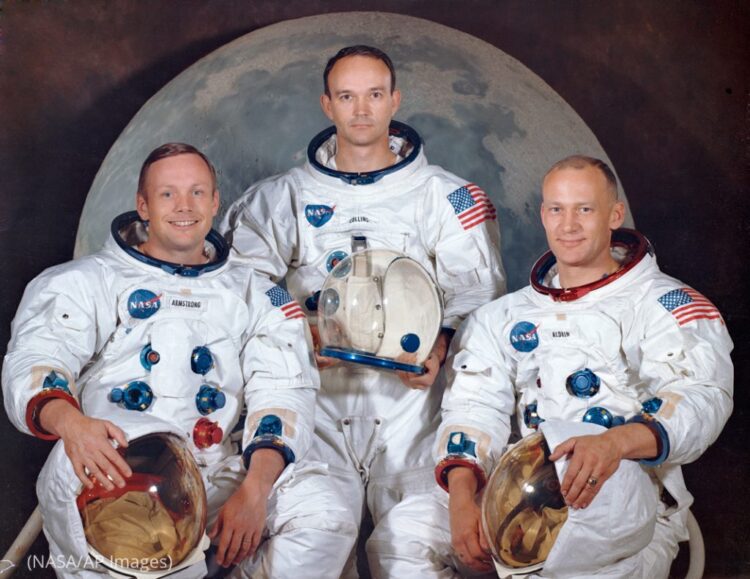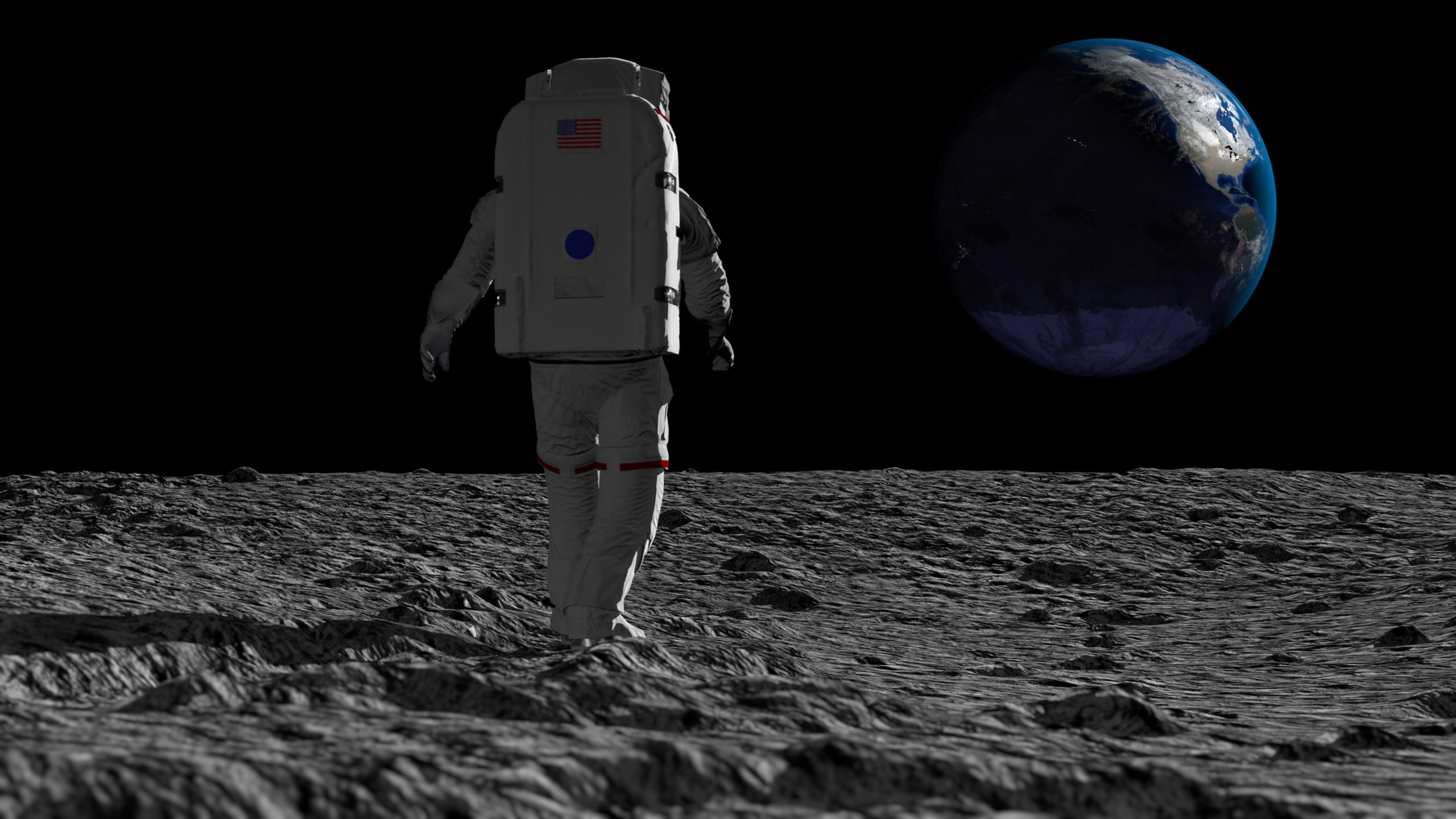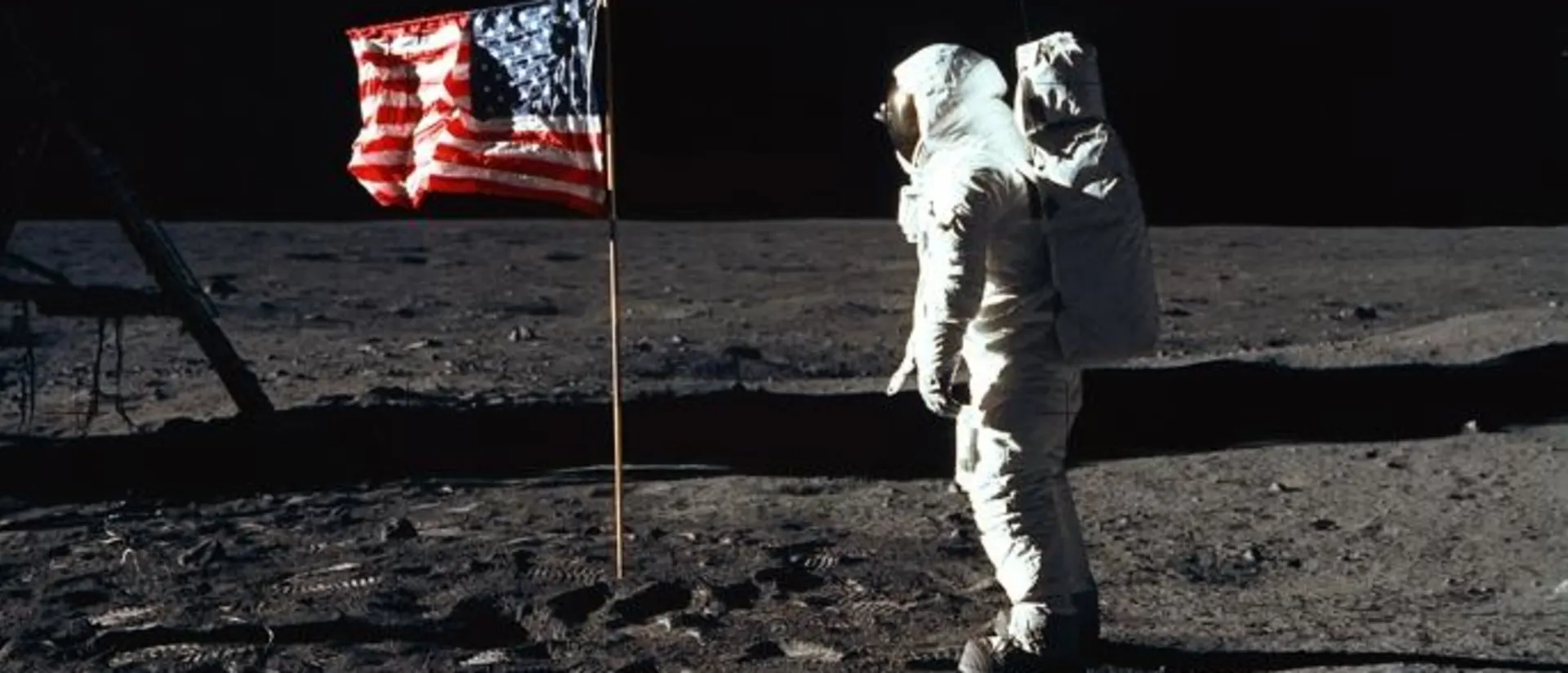By Maria Papagiannopoulou,
American astronauts Neil Armstrong (1930-2012) and Buzz Aldrin (1930-) became the first people to set foot on the moon on July 20, 1969. Six and a half hours later, Armstrong became the first person to set foot on the moon. “That is one modest stride for man, one huge leap for mankind”, Armstrong famously declared as he took his first step. President John F. Kennedy (1917-1963) established a national objective of landing a man on the moon by the end of the 1960s, eight years before the Apollo 11 mission. Apollo 17 was the last manned lunar mission, which happened in 1972.
President John F. Kennedy’s request for a special joint session of Congress on May 25, 1961, marked the beginning of the American attempt to send astronauts to the moon: “I believe this nation should commit itself to achieve the goal, before the end of this decade, of landing a man on the moon and safely returning him to Earth”.
At the time, the United States was still lagging behind the Soviet Union in space development; therefore, Kennedy’s ambitious idea was embraced by Cold War-era America. After a five-year effort by an international team of scientists and engineers to assess the structural integrity of the proposed launch vehicle and spacecraft combination, the National Aeronautics and Space Administration (NASA) launched the first unmanned Apollo mission in 1966.
Then a catastrophe happened on January 27, 1967, when a fire broke out during a manned launch-pad test of the Apollo spacecraft and Saturn rocket at Kennedy Space Center in Cape Canaveral, Florida. The fire claimed the lives of three astronauts.

Shortly after Armstrong and Aldrin placed the American flag on the lunar surface, President Richard Nixon communicated with them by telephone radio transmission. It was the “most historic phone call ever made from the White House”, according to Nixon.
Despite the setback, NASA and its hundreds of personnel plowed ahead, and in October 1968, the first manned Apollo mission, Apollo 7, orbited Earth and successfully tested many of the advanced equipment required for a moon flight and landing. Apollo 8 flew three astronauts to the far side of the moon back in December of the same year, and Apollo 9 tested the lunar module for the first time while in Earth orbit in March 1969. In May of that year, the three Apollo 10 men flew the first full Apollo spacecraft around the moon, in preparation for the planned July landing mission.
On July 19, Apollo 11 entered lunar orbit after traveling 240,000 miles in 76 hours. The lunar module Eagle, manned by Armstrong and Aldrin, detached from the command module at 1:46 p.m. the next day. Collins remained in the command module. The Eagle began its fall to the lunar surface two hours later, and at 4:17 p.m., it landed on the southwestern border of the Sea of Tranquility. Armstrong sent a now-famous transmission to Mission Control in Houston, Texas, saying, “The Eagle has landed”.
Armstrong opened the hatch of the lunar module at 10:39 p.m., five hours ahead of schedule. A television camera attached to the craft filmed his progress as he descended the module’s ladder and sent the signal back to Earth, where hundreds of millions watched in awe. Armstrong said his famous phrase at 10:56 p.m., as he stepped off the ladder and set his foot on the moon’s powdery surface, which he subsequently said was somewhat distorted by his microphone and meant to be “that is one little step for a man, one great leap for mankind”.

19 minutes later, Aldrin joined him on the moon’s surface, where they took images of the terrain, planted a US flag, conducted a few modest scientific tests, and communicated with President Richard Nixon (1913-94) via Houston. Both astronauts were back in the lunar module around 1:11 a.m. on July 21, and the hatch was closed. The two astronauts rested on the moon’s surface that night, and the Eagle began its ascent back to the command module at 1:54 p.m. A plaque bearing the words “Here men from the planet Earth first stepped foot on the moon — July 1969 A.D. We came in peace for all mankind” was among the objects left on the moon’s surface.
Armstrong and Aldrin docked and rejoined Collins at 5:35 p.m. on July 22, and Apollo 11 began its return journey at 12:56 a.m. on July 22, splashing down safely in the Pacific Ocean at 12:50 p.m. on July 24.
The Apollo program was a costly and labor-intensive undertaking that cost $24 billion (about $100 billion in today’s currency) and involved an estimated 400,000 engineers, technicians, and scientists. The cost was justified by President John F. Kennedy’s 1961 objective to beat the Soviets to the moon, and once that goal was achieved, continuous missions were no longer viable.
References
- The Moon Landing, kids.nationalgeographic.com, Available here
- When Apollo 10 Nearly Crashed Into the Moon, history.com, Available here
- July 1969, wikipedia.org, Available here
- Apollo 11, wikipedia.org, Available here




